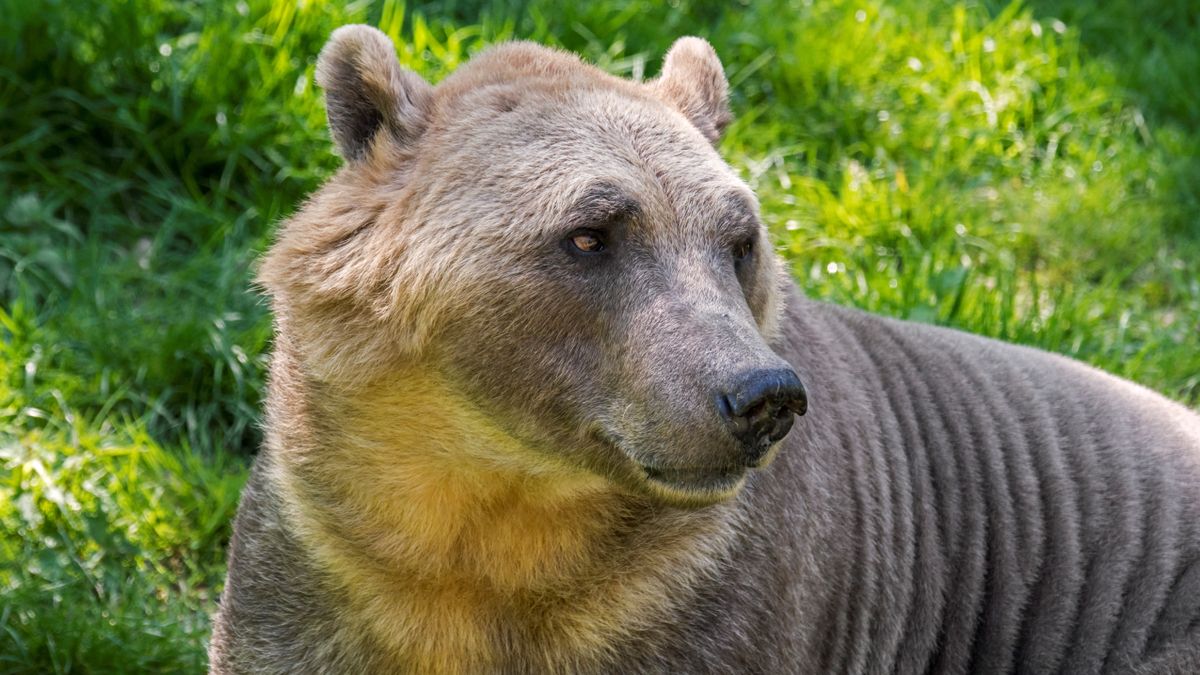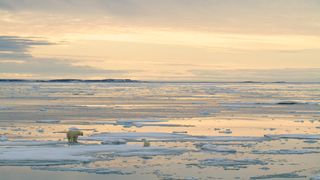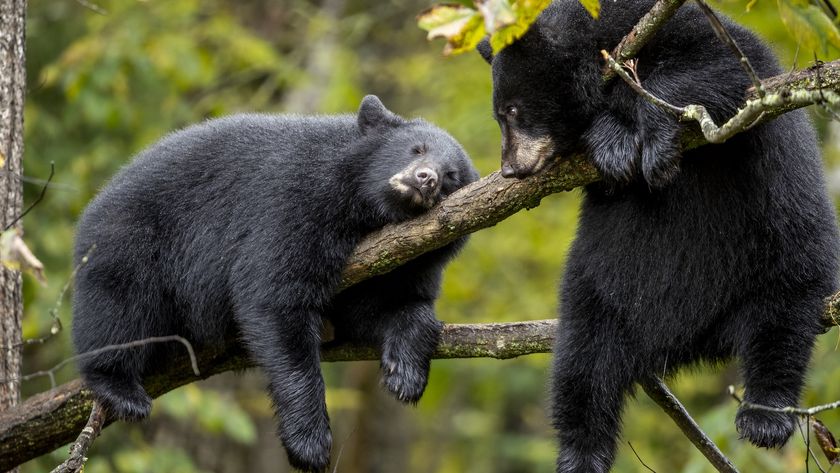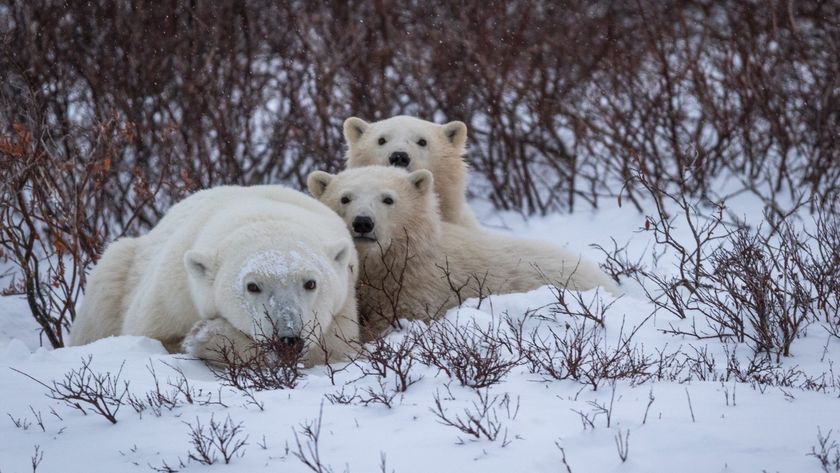'Pizzly' bear hybrids are spreading across the Arctic thanks to climate change
Hybrid polar-grizzly bears are taking over.

Endangered polar bears are breeding with grizzly bears, creating hybrid “pizzly” bears, and it's being driven by climate change, scientists say.
As the world warms and Arctic sea ice thins, starving polar bears are being driven ever further south, where they meet grizzlies, whose ranges are expanding northwards. And with that growing contact between the two species comes more mating, and therefore increased sightings of their hybrid offspring.
With features that could give them an edge in warming northern habitats, some scientists speculate that the pizzlies, or "grolars", could be here to stay.
Related: Polar bear photos: Stunning shots capture Earth's icons of climate change
"Usually hybrids aren't better suited to their environments than their parents, but there is a possibility that these hybrids might be able to forage for a broader range of food sources," Larisa DeSantis, a paleontologist and associate professor of biological sciences at Vanderbilt University in Tennessee, told Live Science. Polar bears have longer skulls, which makes them experts at grabbing seals out of the sea, DeSantis said. "But their molars are smaller than is typical for their body size because all they eat is blubber all day. Grizzlies, on the other hand, can eat whatever they want. We don't know yet, but perhaps the intermediate skull of the pizzly could confer a biomechanical advantage."
Grizzly bears and polar bears only diverged 500,000 to 600,000 years ago, so the two species can mate and produce viable offspring. Observations made in captivity and a study conducted in the wild also suggest that the hybrids are fertile and have themselves produced young.
Wild sightings of hybrid pizzly bears began in 2006, when a hunter shot what he thought was a polar bear in the Northwest Territories of the Canadian Arctic.
Sign up for the Live Science daily newsletter now
Get the world’s most fascinating discoveries delivered straight to your inbox.
When he took a closer look he found an altogether more unusual animal: A bear with the cream-white fur of a polar bear but the long claws, humped back, shallow face and brown patches of a grizzly. DNA tests confirmed that the animal was a hybrid — the first documented wild offspring of a polar bear and a grizzly bear.
Since then, sightings of the hybrids have been increasing, with a 2017 study in the journal Arctic showing eight hybrids springing from a single female polar bear who mated with two grizzly bears.
The rise of the pizzlies coincides with polar bears’ decline: their numbers are projected to decrease by more than 30% in the next 30 years, according to a 2016 study in the journal Biology Letters. This precipitous fall is linked partly to the encroachment of grizzly bears into polar bear ranges, where they outcompete them for alternative food sources, but also to polar bears' highly specialised diets, as DeSantis highlights in research published on April 1 in the journal Global Change Biology.

According to DeSantis, generalist animals such as coyotes and cougars are the best survivors of rapid change to their environment, not highly specialized apex predators like polar bears and saber-toothed cats.
"Polar bears consumed soft foods even during the Medieval Warm Period, a previous period of rapid warming. Their diets haven't changed much at all." DeSantis said, referring to blubbery meals such as seals. "It's why what we're seeing now — all of these starving polar bears trying to find alternative food sources — could really represent a tipping point."
According to a statement from the National Snow and Ice Data Center (NSIDC), Arctic sea ice, which the bears use as their hunting grounds, decreased by about 336,000 square miles (870,000 square kilometres) this year from its 1981 to 2010 average maximum. That represents the loss of an area about twice the size of California. Although polar bears can adapt their diet to include sea bird eggs and caribou when on land, a 2015 study published in the journal Frontiers in Ecology and the Environment found that the calories they gain from these sources do not balance out those they burn from foraging for them, Live Science previously reported.
All of this could result in a habitat ready for the hybrids to move in and take over, leading to a loss in biodiversity if polar bears are replaced.
"We're having massive impacts with climate change on loads of species right now," DeSantis said. "The polar bear is the canary in the coalmine telling us how bad things are."
In some sense, pizzly bears could be a sad but necessary compromise given current warming trends, DeSantis said.
"Apex predators help stabilize ecosystems, and looking forward I really hope the Arctic still has a polar bear. But, with that all being said, could the pizzly allow for bears to continue to exist in intermediate regions of the Arctic? Possibly, yes. That's why we need to continue to study them."
Originally published on Live Science.

Ben Turner is a U.K. based staff writer at Live Science. He covers physics and astronomy, among other topics like tech and climate change. He graduated from University College London with a degree in particle physics before training as a journalist. When he's not writing, Ben enjoys reading literature, playing the guitar and embarrassing himself with chess.











